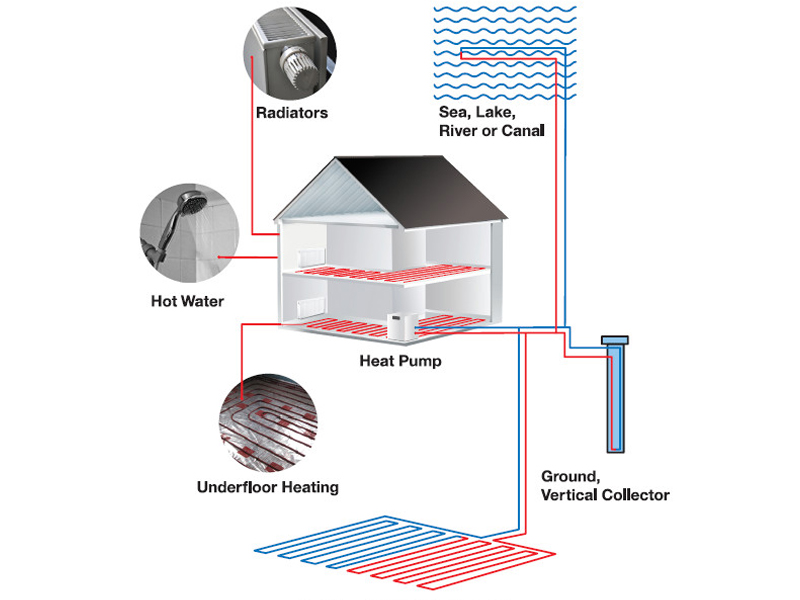Recently, there are more and more inquiries about ground source heat pumps, so it is necessary for us to learn more about it.

Ground source heat pumps extract heat from the ground by circulating fluid through buried pipes in horizontal trenches or vertical boreholes.
They concentrate heat by using a vapour compression cycle, and they transfer heat into buildings to provide heating and hot water without burning fossil fuels. See How GSHPs work.
A well designed GSHP system provides the lowest running cost of any heating system – because it uses a small amount of electricity to transfer a large amount of naturally occurring heat from the ground into your building.
An investment in a GSHP system is an investment for the long term – the groundworks have a design life of 100 years and the GSHP itself has a life longer than any combustion boiler.
The benefits of using a GSHP are that you can:
enjoy lower fuel bills, especially if you replace heating by oil, coal, LPG, or direct electric
eliminate the need for fuel deliveries
reduce your annual maintenance costs
reduce your carbon emissions dramatically
earn significant income from the Renewable Heat Incentive
install a safe, silent, invisible heating system with no planning restrictions
You should take advice from an experienced installer to realise these benefits. Your building may benefit from increased insulation, and its heat distribution system may need to be adapted to take full advantage of using a ground source heat pump. A GSHP is very efficient at producing warmth rather than heat, so you may benefit from larger radiators or underfloor heat distribution. You will need a control system that matches the characteristics of a heat pump in order to provide the gentler heat over a longer period than would be needed with high temperature water delivered to smaller radiators.
Some of the articles are taken from the Internet. If there is any infringement, please contact us to delete it.

